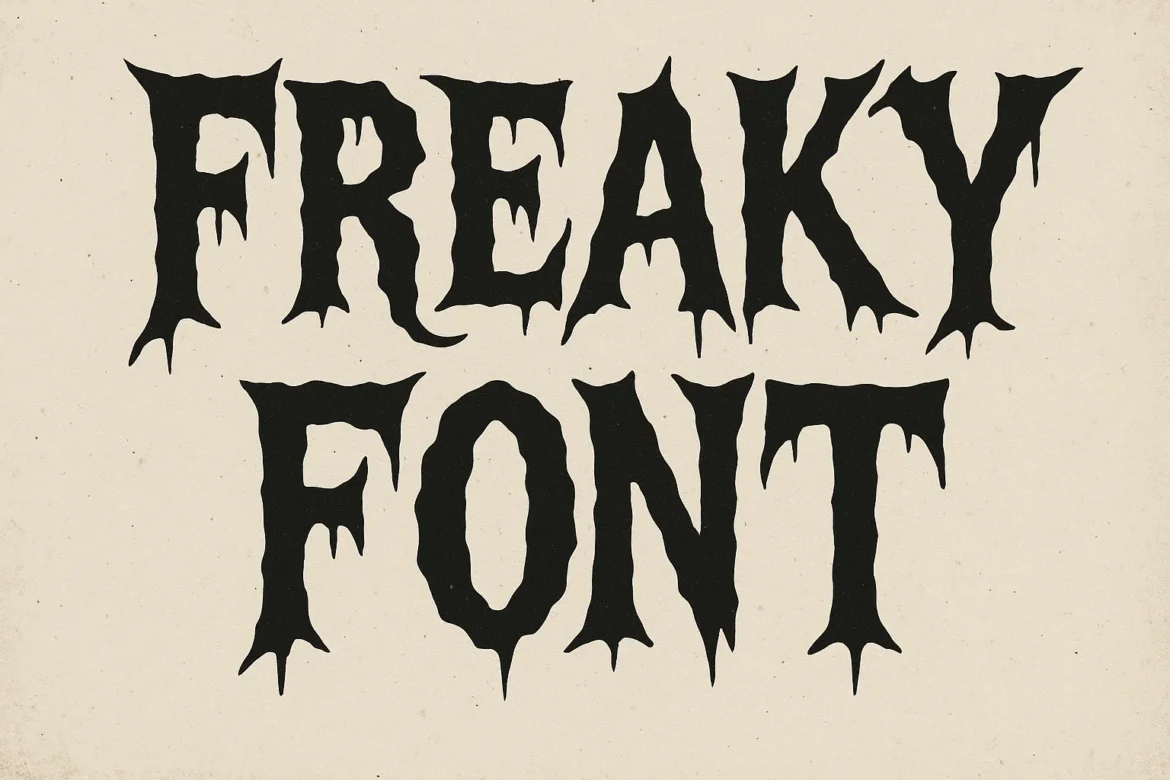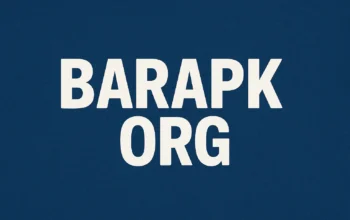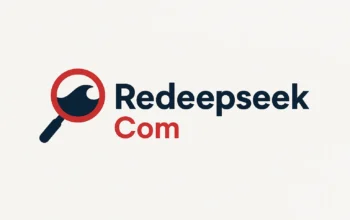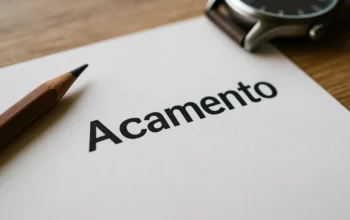
Introduction to Freaky Font
Typography has always been an essential part of design, influencing how people perceive words, brands, and even emotions. Among the many creative styles in the world of typography, the concept of a freaky font stands out as a bold and unconventional choice. Unlike traditional serif or sans-serif fonts that focus on readability and professionalism, freaky fonts push the boundaries of creativity. They are often strange, weird, and unconventional—sometimes spooky, sometimes playful, and always eye-catching. Designers and content creators often use them when they want to break away from the ordinary and create something memorable.
What Is a Freaky Font?
A freaky font refers to a typeface that appears unusual, bizarre, or experimental. These fonts do not conform to conventional rules of typography. Instead, they are designed to shock, surprise, or intrigue the audience. A freaky may have distorted letterforms, uneven spacing, strange curves, or gothic-inspired details. Some freaky might look eerie and unsettling, while others might appear quirky and humorous. The common element among them is their ability to stand out and grab attention immediately. In design, such fonts are often associated with themes like horror, Halloween, fantasy, or alternative culture.
Historical Evolution of Freaky Fonts
Typography has been evolving since the invention of the printing press, but the rise of freaky fonts can be traced to cultural and artistic movements. During the psychedelic era of the 1960s, designers experimented with warped lettering and surreal styles that mirrored the counterculture’s love of freedom and rebellion. Later, punk rock zines of the 1970s and 1980s adopted chaotic and freaky lettering to emphasize anti-establishment messages. With the digital revolution in the late 20th century, new tools allowed designers to distort and manipulate fonts more easily, giving rise to a vast collection of freaky font styles. Today, freaky items are available in abundance online, reflecting both retro influences and modern digital creativity.
Characteristics of Freaky Fonts
Freaky fonts are recognized by a number of defining features. One key characteristic is distortion—letters may be stretched, twisted, or shattered. Another common trait is irregularity, where spacing and alignment do not follow traditional rules. Many freaky include exaggerated elements such as elongated strokes, dripping effects, jagged edges, or uneven thickness. Some incorporate horror-inspired motifs like blood splatters or skeletal designs, while others draw from psychedelic or cartoonish aesthetics. These unusual features make freaky perfect for themes that demand shock value, uniqueness, or a break from convention.
Freaky Fonts in Graphic Design
Graphic designers often use freaky fonts to inject personality into their projects. For example, a poster promoting a haunted house attraction might use a dripping, blood-red, freaky image to instantly set a chilling tone. On the other hand, a children’s Halloween party invitation could use a playful, wobbly, freaky look that looks silly rather than scary. Designers understand that typography is not just about words—it is about emotion. By selecting a freaky, they are sending a visual message before the reader even processes the actual text. This power makes Freaky an invaluable tool in creative design.
Popular Uses of Freaky Fonts
Freaky fonts are widely used in different contexts. In the entertainment industry, movie posters for horror films often feature creepy, jagged fonts that evoke fear. Music album covers, especially in genres like punk, heavy metal, and gothic rock, frequently use freaky to convey rebellious or dark themes. Online content creators also love freaky for social media posts, memes, and banners because they immediately grab attention. Seasonal events like Halloween and Día de los Muertos rely heavily on freakiness to set the mood. Even in the fashion industry, freaky elements appear on streetwear designs, emphasizing boldness and individuality.
Freaky Font and Horror Aesthetics
The horror genre and freaky fonts go hand in hand. A horror story’s title written in a standard font might not evoke any emotion, but when the same title is written in a jagged, dripping, freaky font, it instantly becomes chilling. Designers often create fonts that mimic scratches, blood stains, or ghostly shadows to enhance the unsettling atmosphere. This connection between typography and fear demonstrates how powerful design can be. Many iconic horror movies—such as classics from the 1980s—owe part of their memorable branding to the freaky images used in their promotional materials.
Freaky Font in Digital Media
 With the rise of social media and digital platforms, freaky font have become more accessible than ever. Websites and mobile applications often feature custom typography to make their designs stand out. Content creators use freaky fonts to create unique Instagram posts, TikTok edits, or YouTube thumbnails. Since audiences are constantly bombarded with visual content, a freaky serves as a quick way to stop the scroll and capture attention. Many font generator websites now allow users to type text and instantly convert it into freaky styles, making it easy for non-designers to add flair to their digital content.
With the rise of social media and digital platforms, freaky font have become more accessible than ever. Websites and mobile applications often feature custom typography to make their designs stand out. Content creators use freaky fonts to create unique Instagram posts, TikTok edits, or YouTube thumbnails. Since audiences are constantly bombarded with visual content, a freaky serves as a quick way to stop the scroll and capture attention. Many font generator websites now allow users to type text and instantly convert it into freaky styles, making it easy for non-designers to add flair to their digital content.
The Psychology Behind Freaky Fonts
Typography influences emotions in subtle yet powerful ways. Freaky fonts work on a psychological level by breaking expectations. Humans are accustomed to standard fonts like Arial or Times New Roman, so when they encounter something unusual, their brains immediately take notice. Freaky can trigger emotions such as curiosity, fear, amusement, or even discomfort. For instance, a jagged font with dripping letters might evoke fear, while a bouncy, warped font might create a sense of fun. This psychological impact explains why freaky is so effective in marketing campaigns that need to grab attention quickly.
Advantages of Using Freaky Fonts
One of the biggest advantages of using freaky fonts is their ability to stand out. In a world saturated with advertisements and digital content, uniqueness is invaluable. Another advantage is versatility—Freakycan be adapted for different moods, whether scary, playful, or eccentric. They also allow brands and creators to express individuality, signaling that they are not afraid to break the rules. Freaky are great for thematic designs, especially around holidays like Halloween. For marketers and designers, these fonts act as a shortcut to instant emotional engagement with the audience.
Challenges and Limitations of Freaky Fonts
Despite their appeal, freaky fonts are not without challenges. The biggest limitation is readability. Since many freaky distorted letterforms, they can be difficult to read, especially in long passages of text. Overusing them in a design may also overwhelm the viewer and reduce overall effectiveness. Another challenge is context—while freaky works well for horror or entertainment, they may appear unprofessional in corporate or academic settings. Designers need to strike a balance between creativity and functionality when deciding whether to use a freaky font.
Freaky Fonts in Branding and Marketing
Brands often look for ways to differentiate themselves, and typography plays a key role in that strategy. Freaky fonts can be powerful branding tools when used appropriately. For example, a Halloween-themed candy company might incorporate a freaky image in its packaging to emphasize fun and spookiness. Similarly, a music festival focusing on alternative culture could use bold, chaotic lettering to reflect its rebellious spirit. However, successful branding requires consistency. A brand that wants to maintain long-term credibility may use freaky sparingly, reserving them for seasonal campaigns or limited-edition designs.
Freaky Font in Fashion and Streetwear
Streetwear culture often thrives on bold and unconventional designs, making freaky fonts a natural fit. Clothing brands frequently print freaky on hoodies, T-shirts, and accessories to appeal to younger audiences who value individuality and edginess. Freaky in fashion can convey rebellion, creativity, or humor, depending on the design. For instance, gothic-inspired, freaky fonts are popular in alternative subcultures, while distorted cartoonish fonts might appeal to those seeking a more playful style. The adaptability of freaky makes them a versatile element in the fashion world.
Creating Your Own Freaky Font
For designers who want to create their own freaky font, there are many tools available. Software such as Adobe Illustrator, Photoshop, and specialized font-creation programs allow users to experiment with shapes and distortions. The process often begins with sketching out unusual letterforms, followed by digitizing and refining them. Designers can play with elements like dripping textures, jagged edges, and uneven baselines to achieve a freaky look. Creating a custom freaky not only ensures uniqueness but also allows for full creative expression.
Freaky Font Generators Online
Not everyone has the time or skill to design fonts from scratch, which is why online font generators have become popular. These tools allow users to type in text and instantly transform it into weird and unusual styles. From creepy gothic looks to playful warped letters, font generators make freaky fonts accessible to everyone. They are especially useful for social media users who want to customize bios, captions, or banners. While these generators cannot replace professional typography in large-scale design, they are a quick and fun way to experiment with freaky fonts.
Cultural Impact of Freaky Fonts
Freaky fonts are more than just a design choice—they are a cultural expression. They often appear during cultural events such as Halloween, music festivals, and art exhibitions. In many cases, they reflect society’s fascination with the unusual, the spooky, and the rebellious. By embracing weirdness, freaky challenge the dominance of traditional typography and celebrate individuality. Their cultural significance lies in their ability to connect with audiences on an emotional and symbolic level, whether through fear, humor, or curiosity.
Future of Freaky Fonts
As technology continues to evolve, the future of freaky fonts looks promising. Advancements in digital tools and artificial intelligence are making it easier to create experimental typography. Animated freaky that move, drip, or flicker are becoming increasingly popular in digital media. Virtual reality and augmented reality may also bring new opportunities for interactive typography, where freaky could react to user movements. The demand for unique, attention-grabbing design is not going away, which means freaky will continue to thrive in both niche and mainstream spaces.
Conclusion: The Lasting Appeal of Freaky Fonts
The world of typography is vast, but freaky fonts occupy a special place in it. They represent creativity, rebellion, and emotional impact. Whether used in horror films, fashion, or digital media, freaky breaks away from tradition and creates lasting impressions. While they may not be suitable for every context, their power to capture attention and evoke emotion makes them invaluable for designers and creators. As trends evolve, freaky will continue to adapt, proving that typography is not just about reading—it is about experiencing.
Also Read: British Airways Emergency Flight BA286


